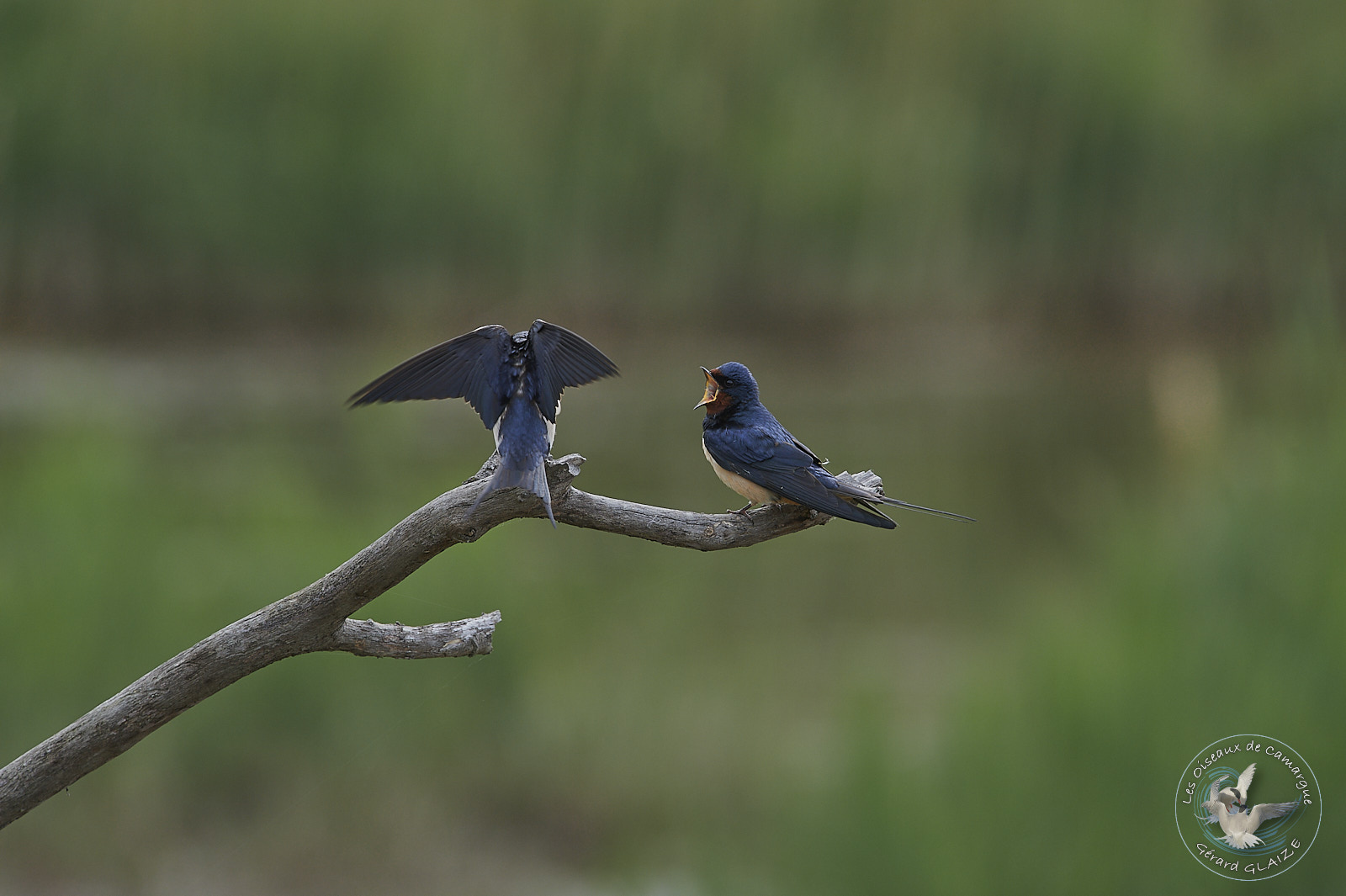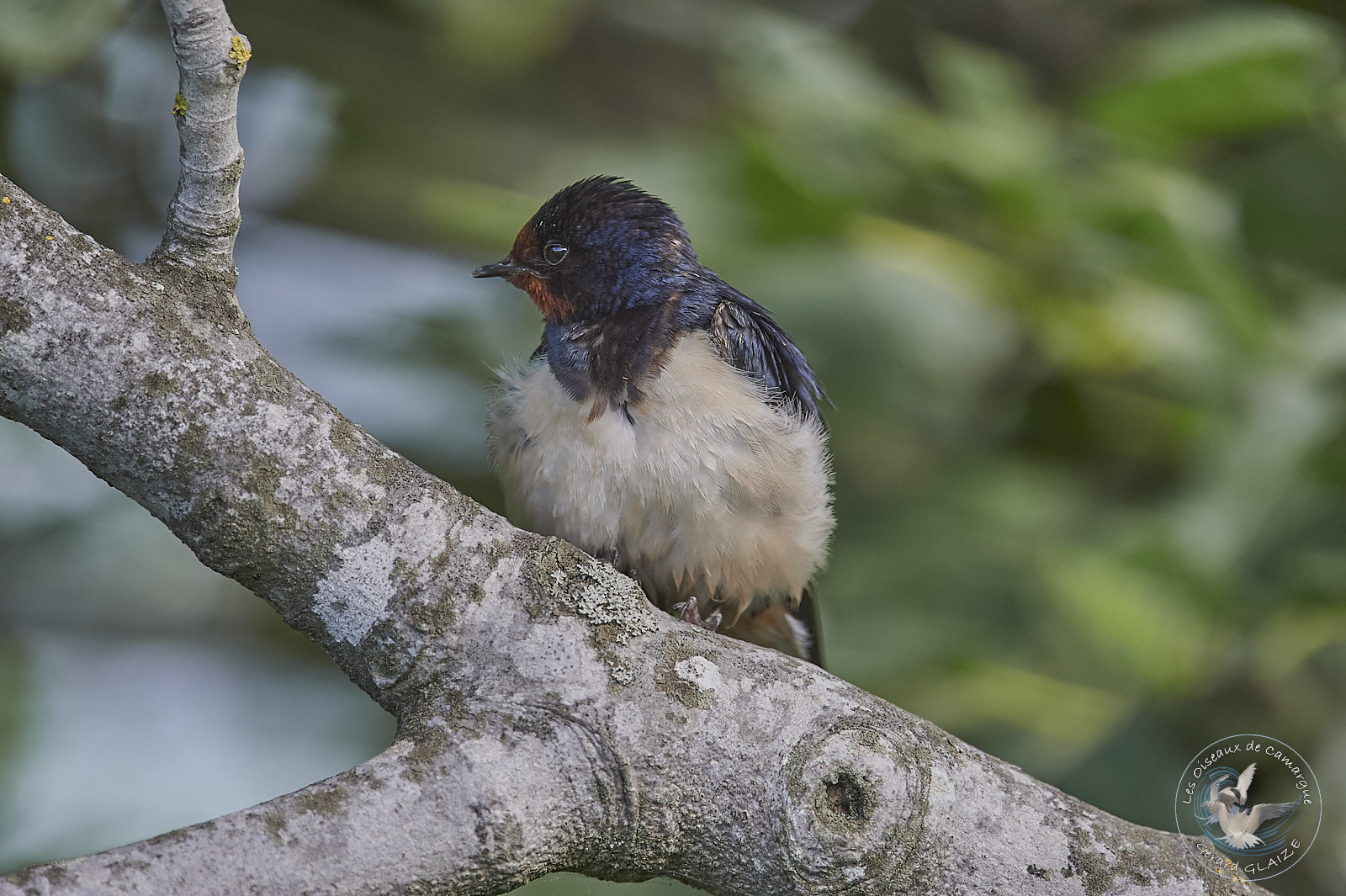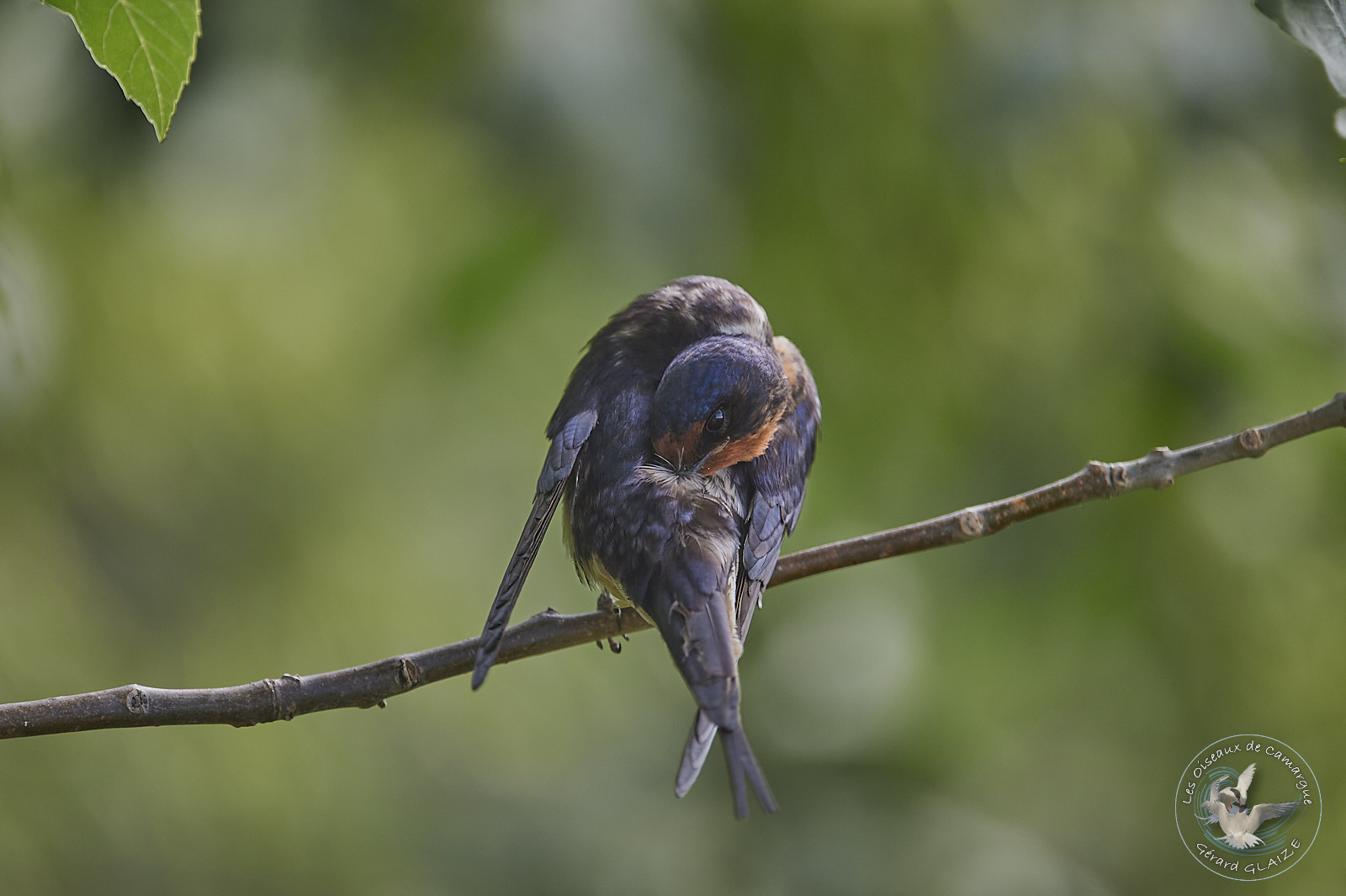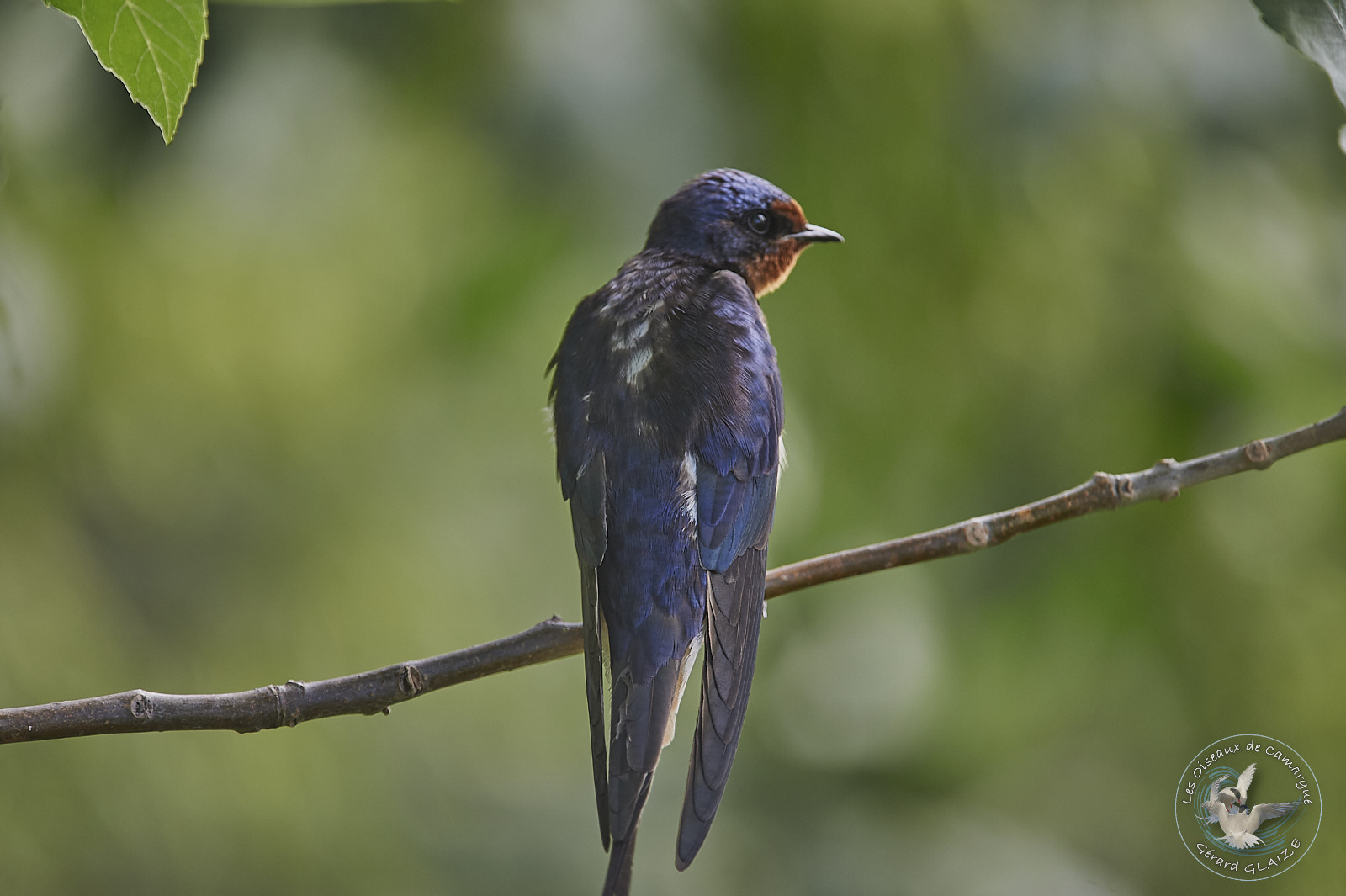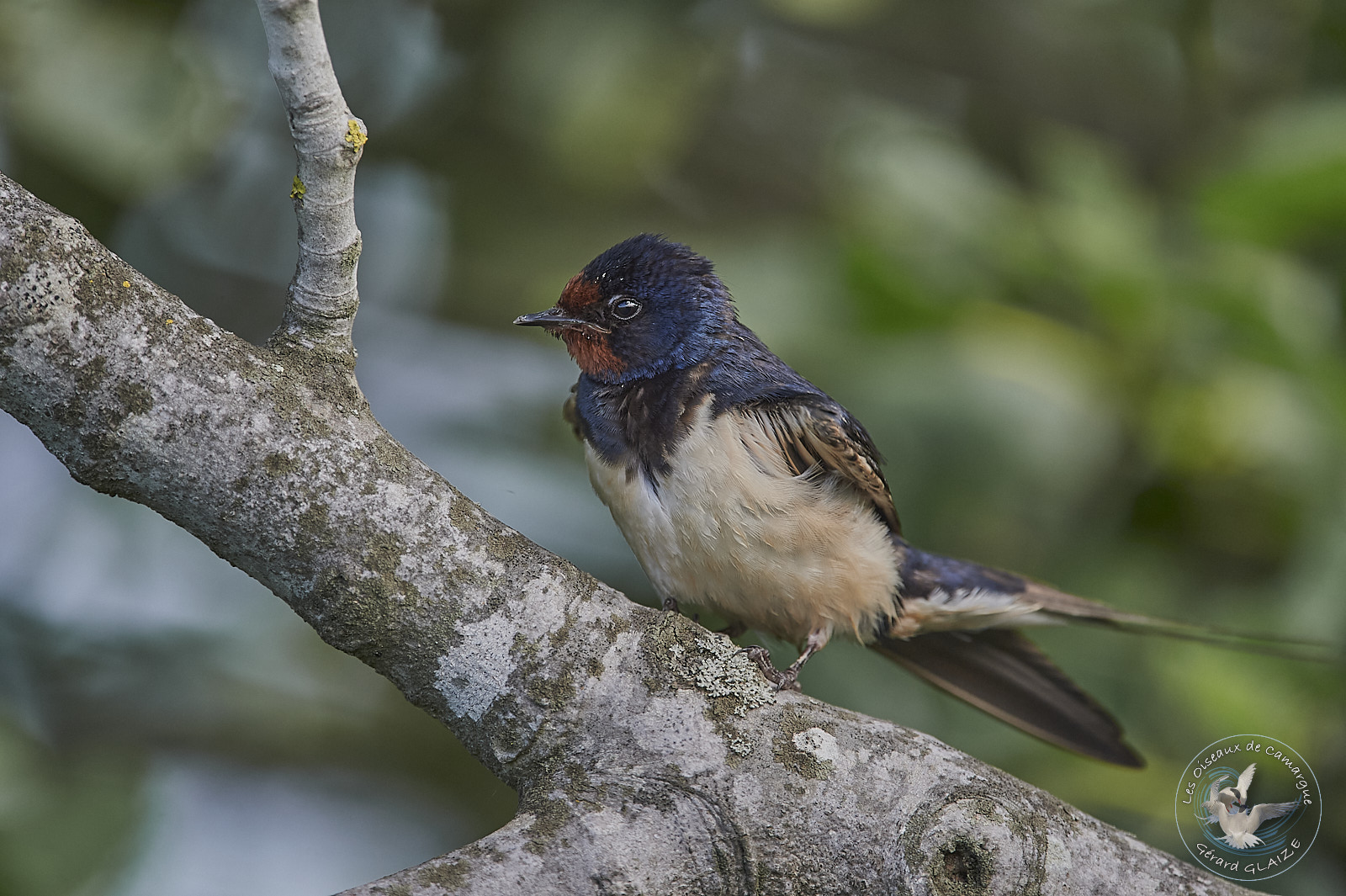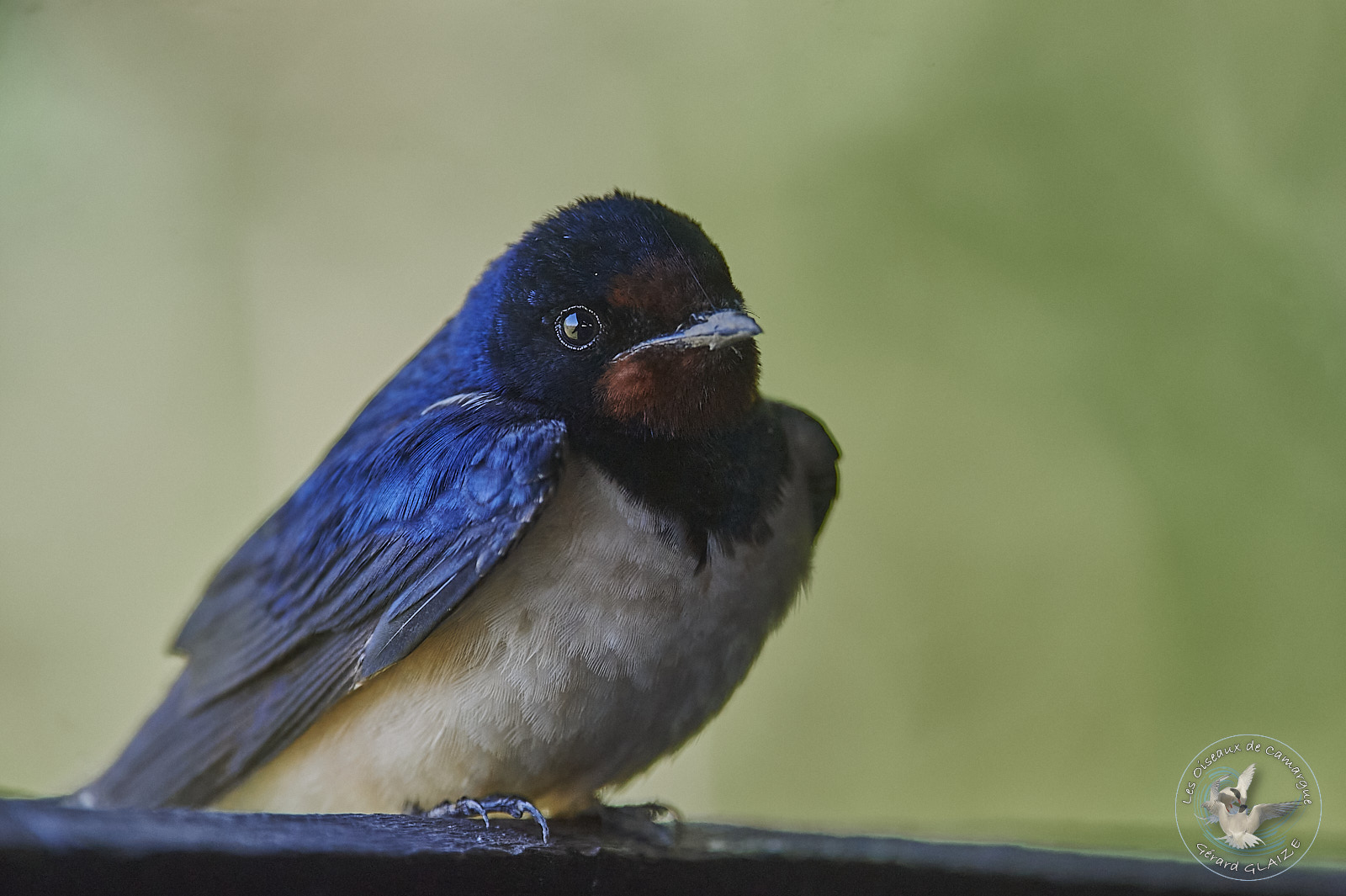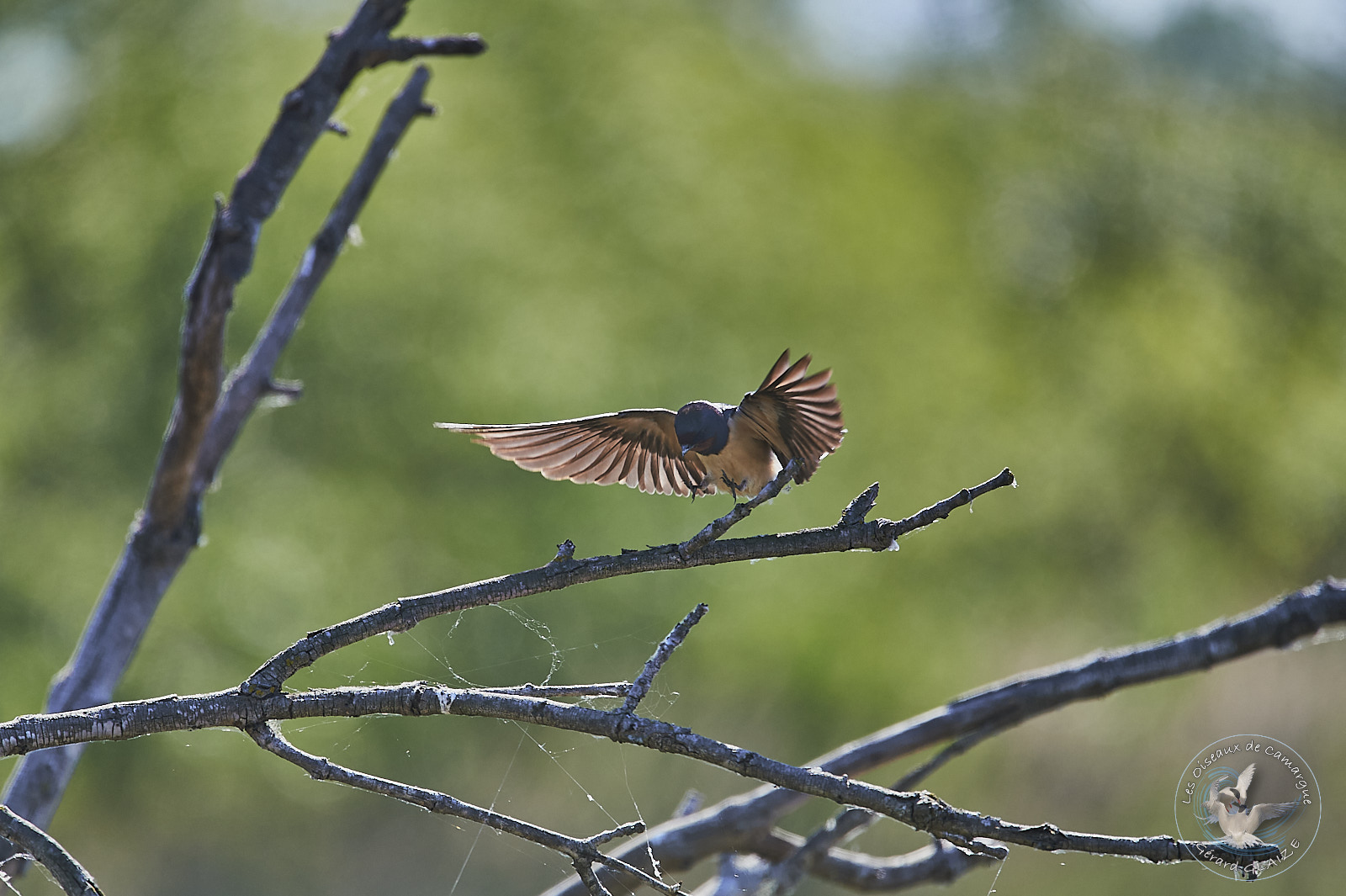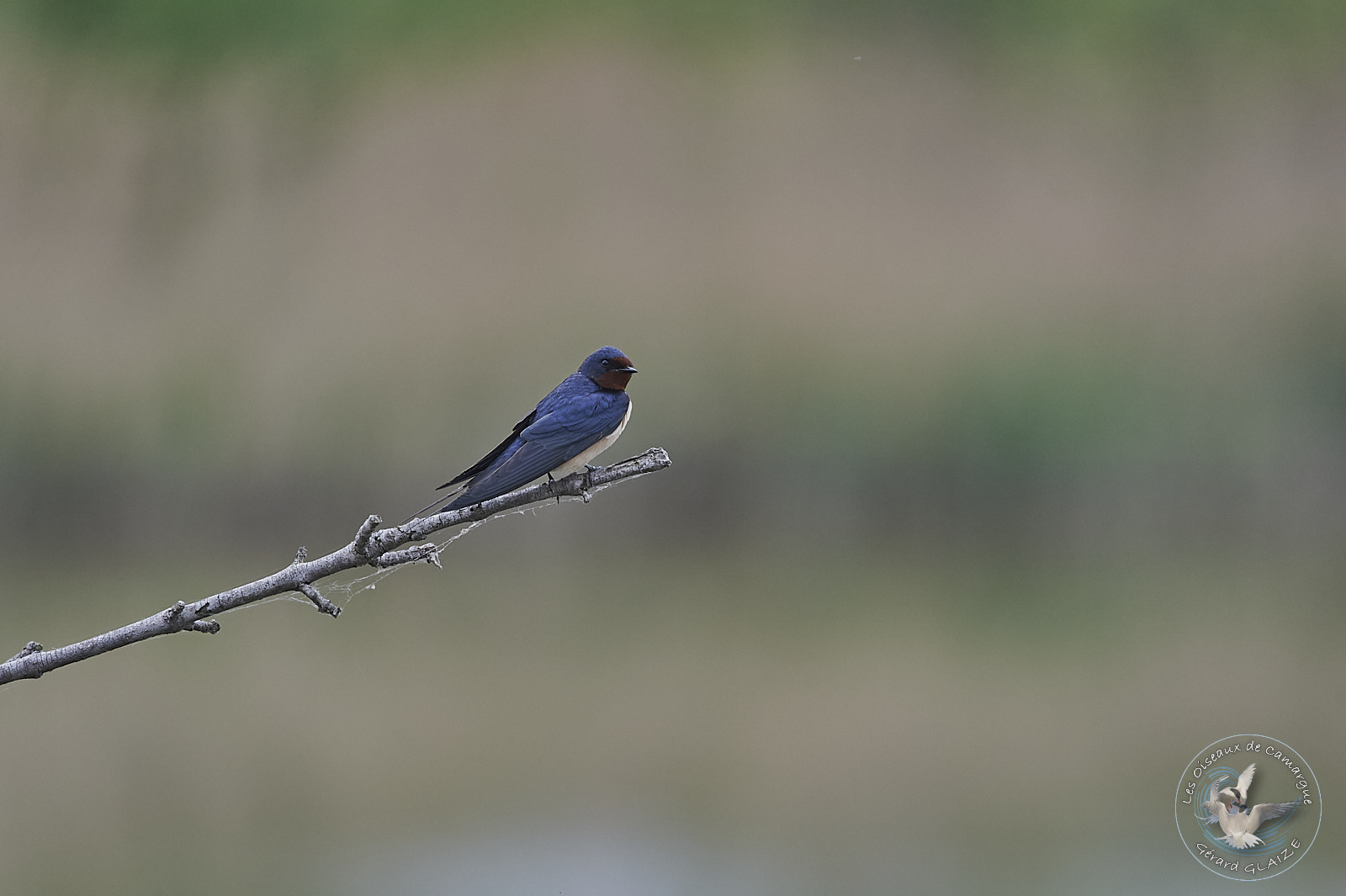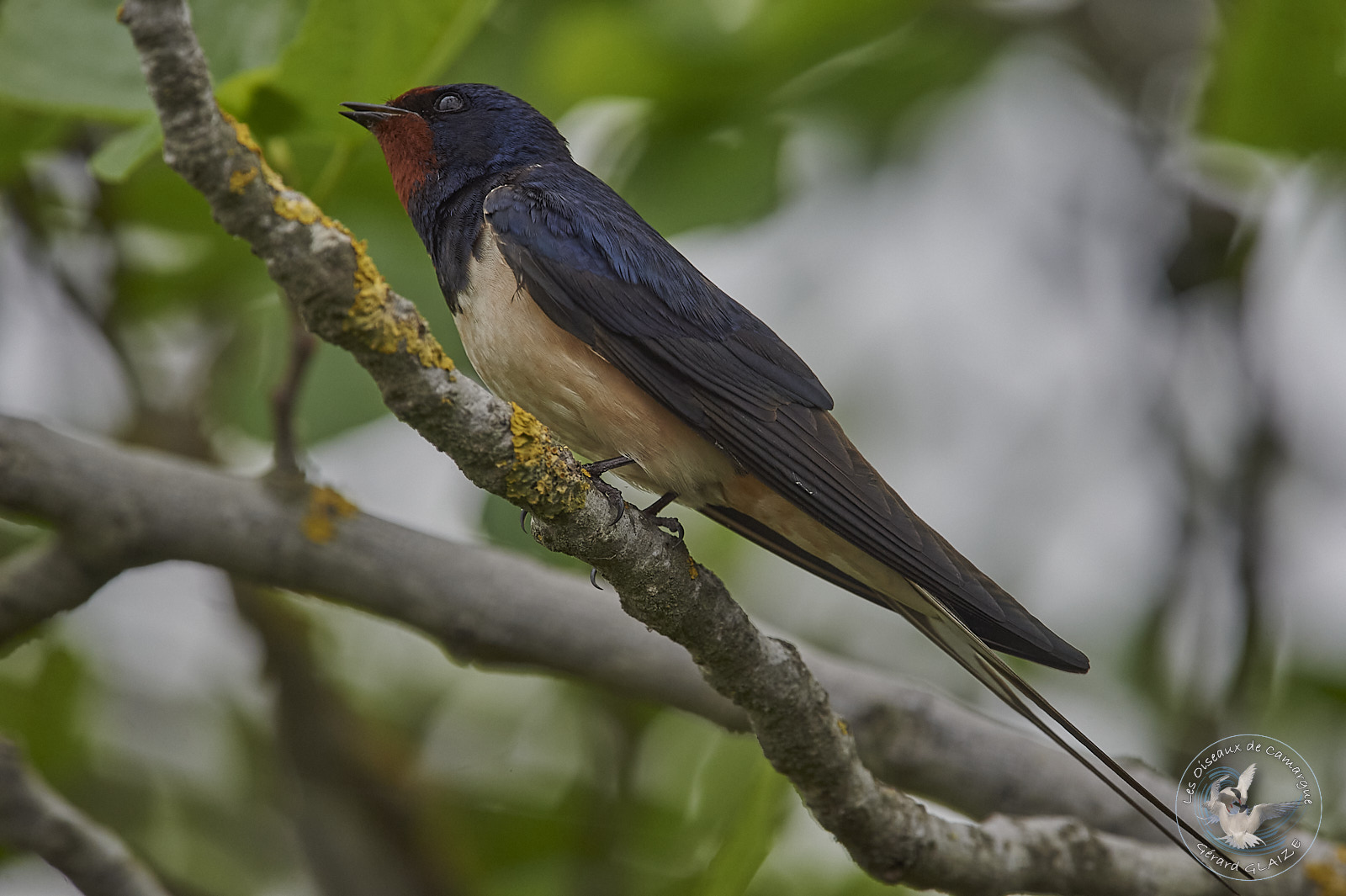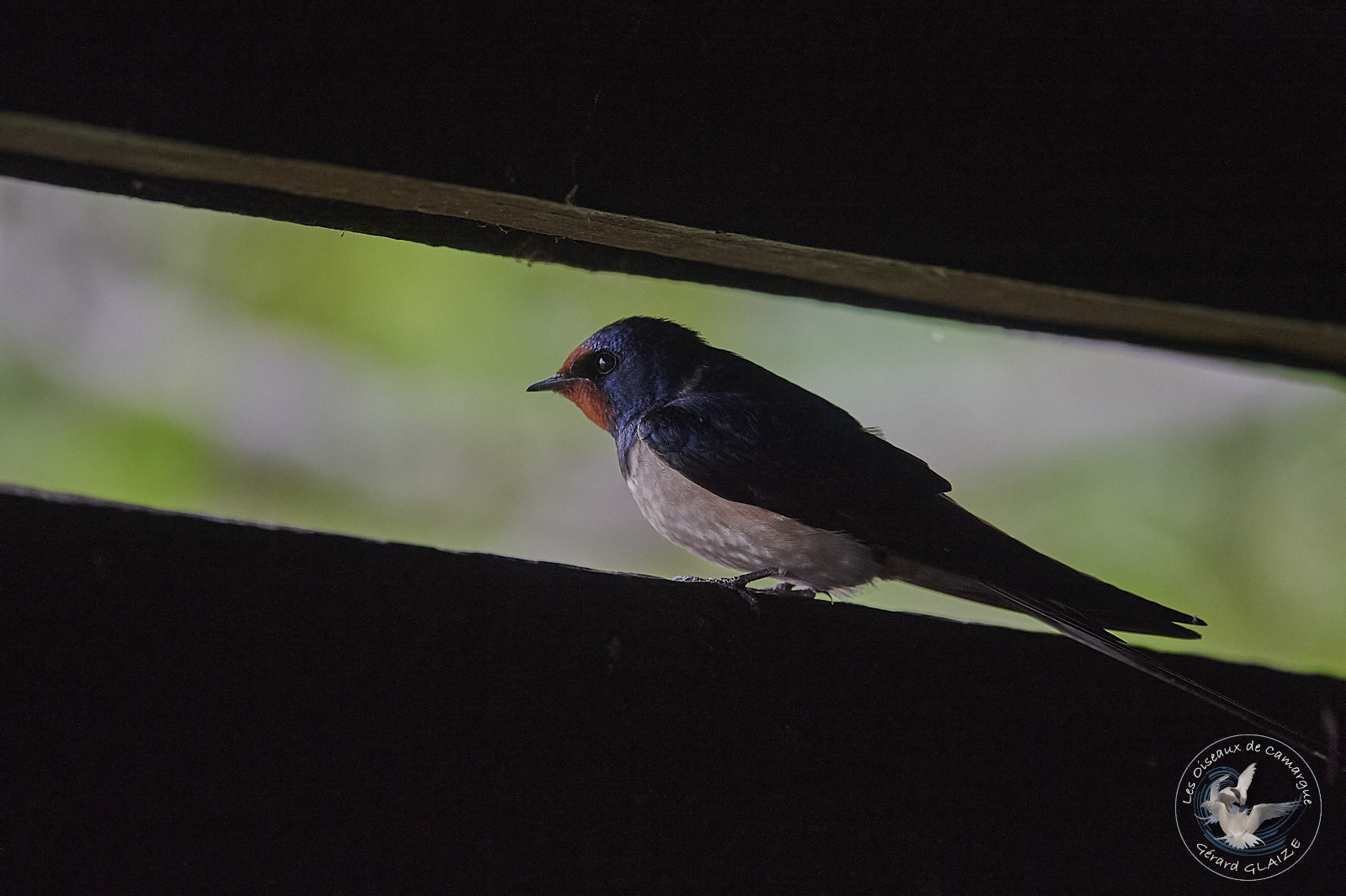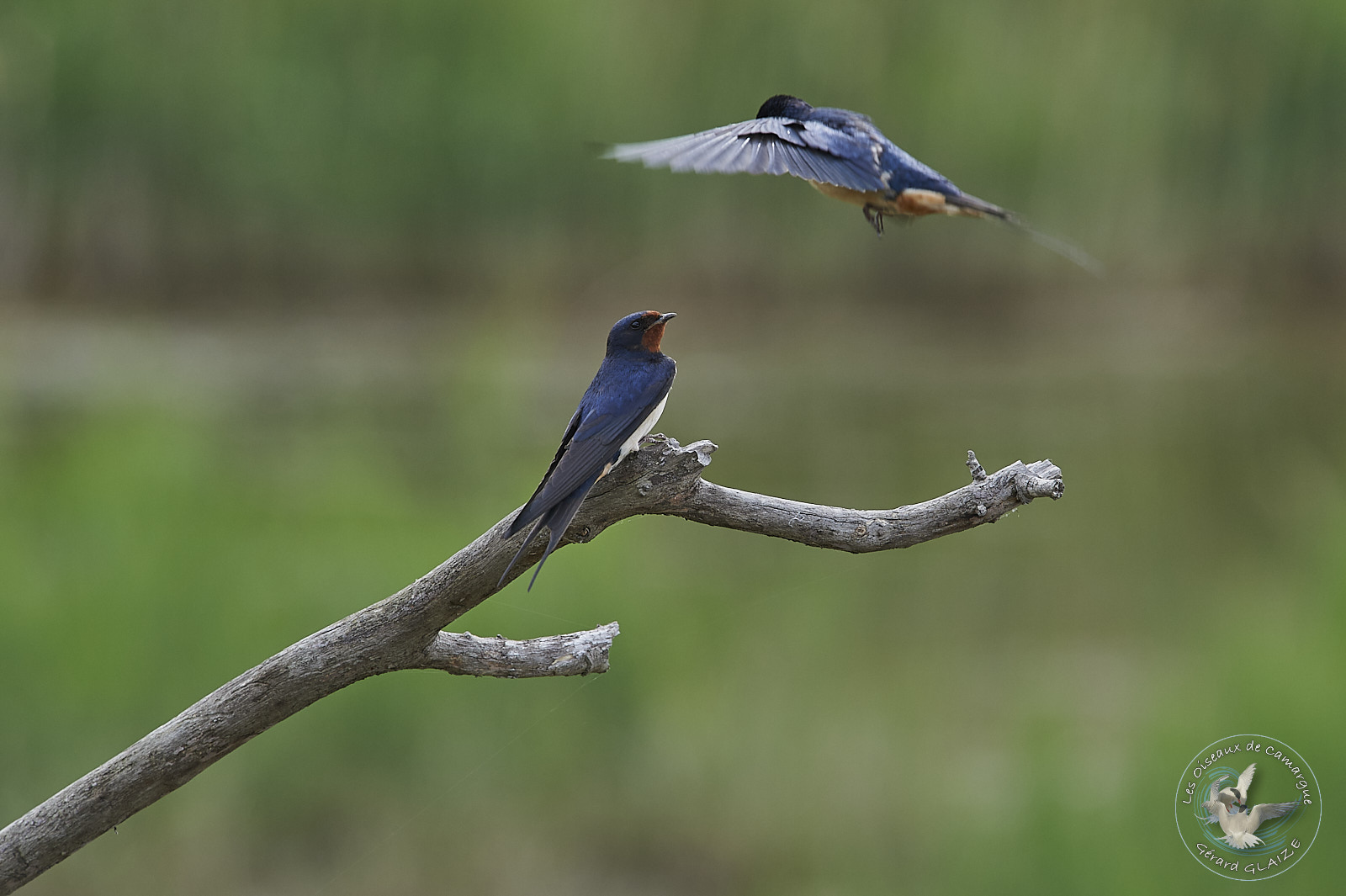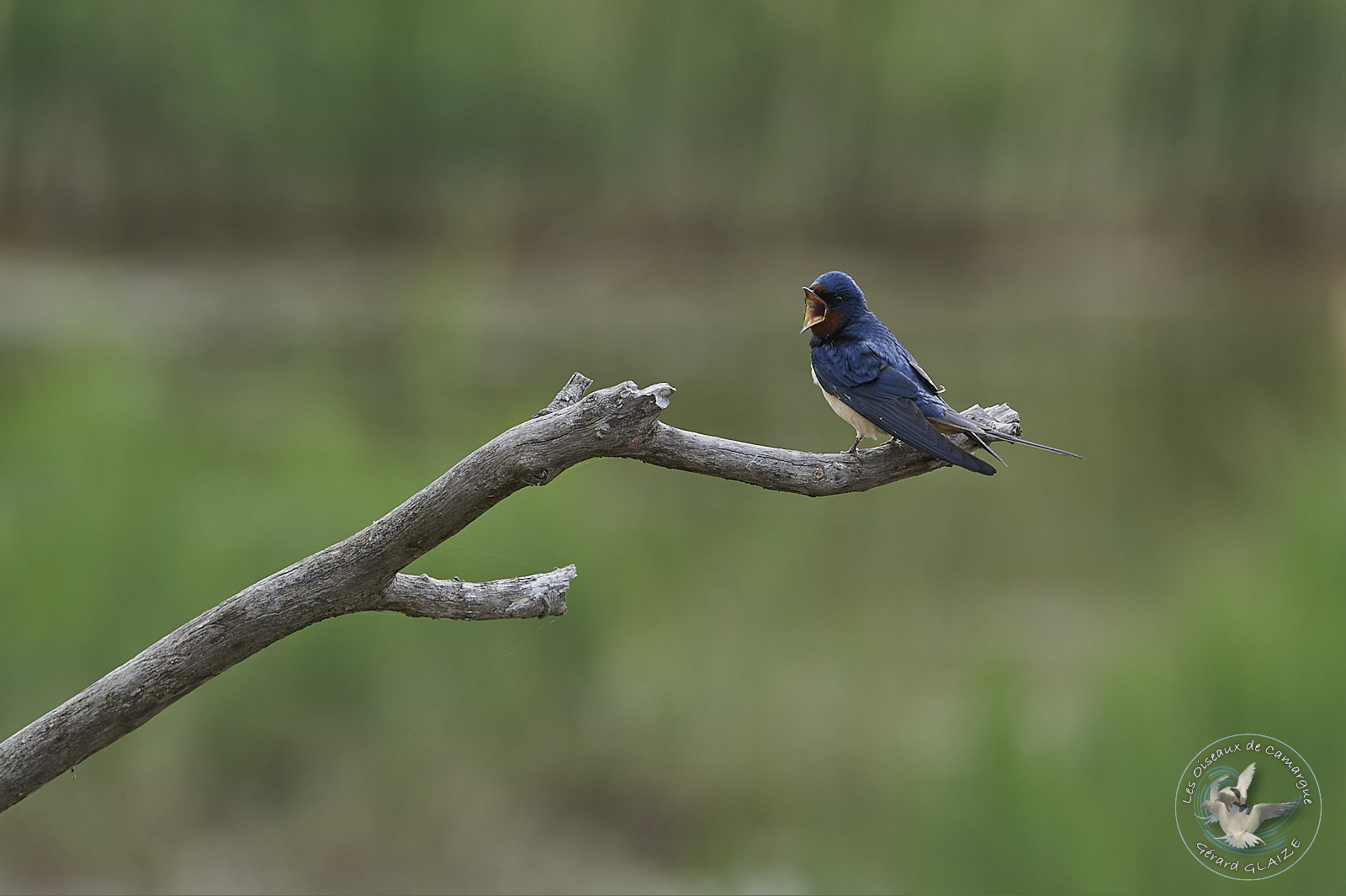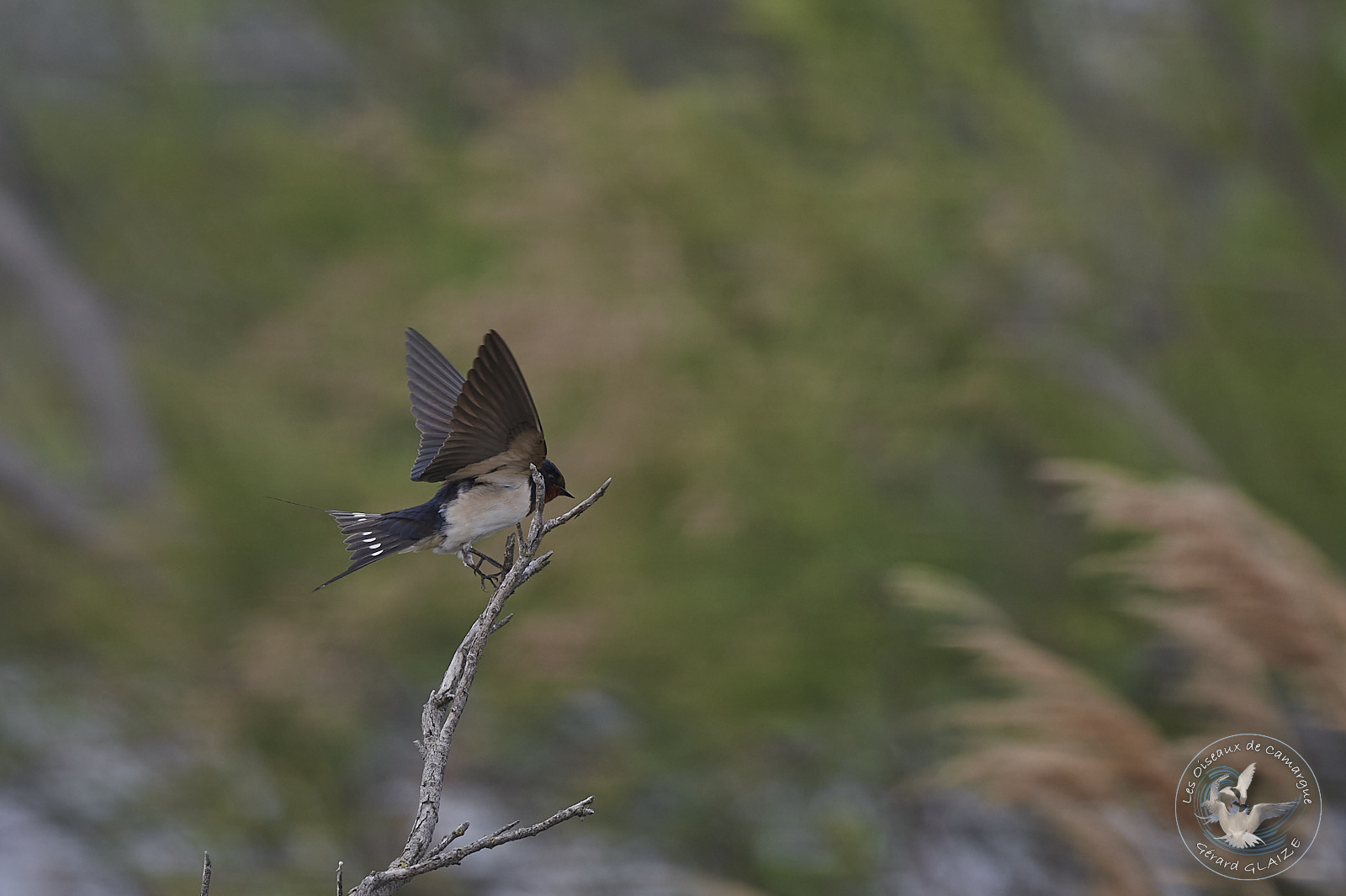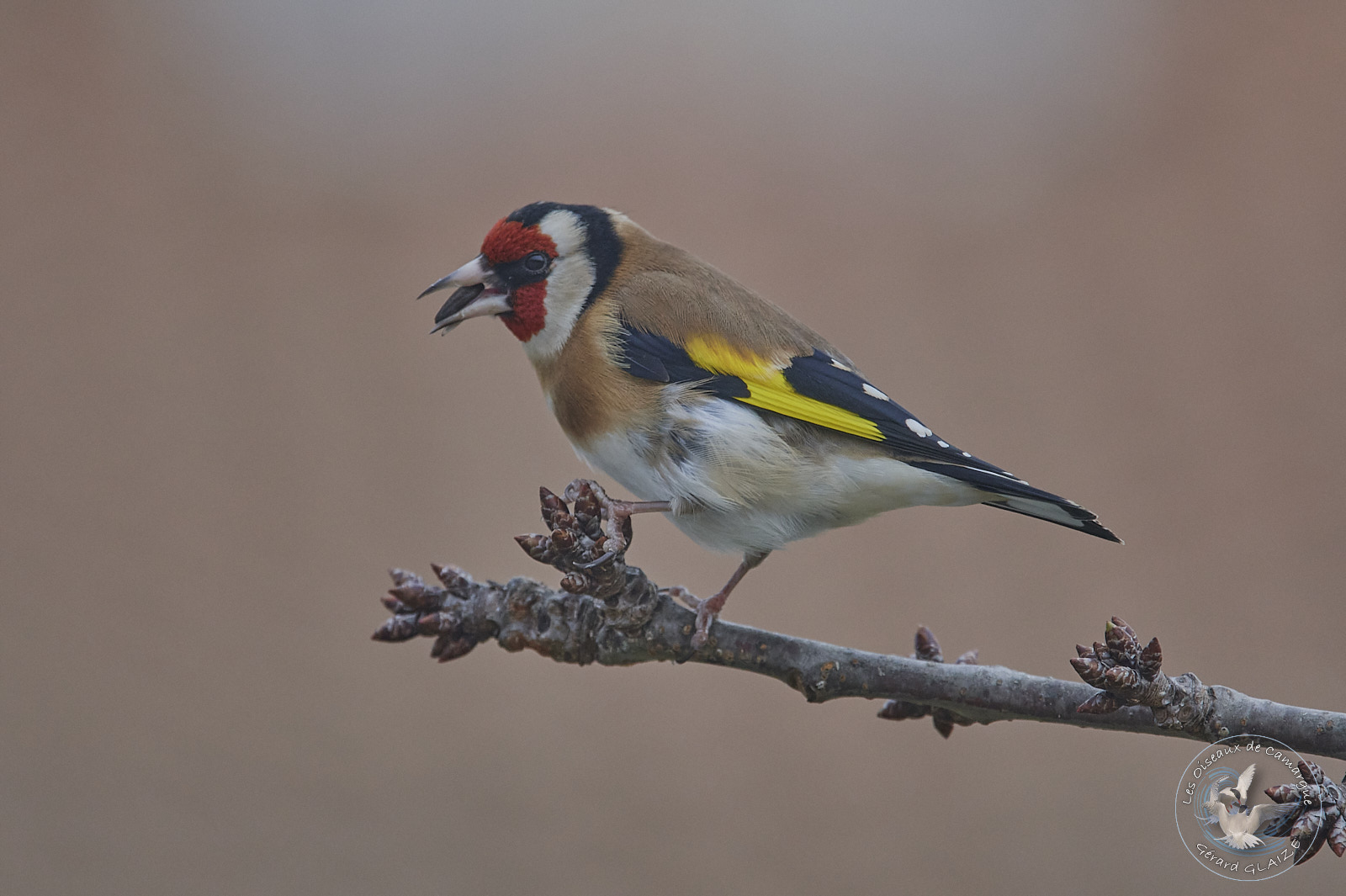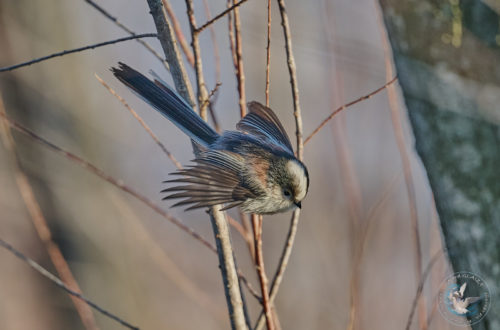Barn Swallow
The Barn Swallow is a small, migratory passerine species living in Europe, Asia, Africa and America. This bird is also known as the Chimney Swallow or the Barn Swallow. It is a bird with a blue-black upperparts with metallic sheen which contrasts with the whitish underparts washed with rufous. She has a sleek, slender figure with a forked tail. This one is very indented, the strands called the “nets” are however very apparent and longer in the male. We can notice white spots towards the end of its tail. Its forehead and throat are reddish-brown underlined by a dark chest band. It is distinguished from other hirundinids by the absence of white on the rump.
Barn Swallow
Scientific name : Hirundo rustica
Family : Hirundinidae
Length: 18 cm – Wingspan: from 32 cm to 34 cm
Weight : from 16 gr to 25 gr
IUCN Conservation Status: LC
Flight
The Barn Swallow is an outstanding acrobat. Sometimes hovering, sometimes flapping their wings briskly, swallows know how to turn with the rapidity of lightning, ascend, descend, skim the ground, glide on the surface of the water or dive into it without interrupting their flight. With an estimated speed of 39 km/h, which can reach 72 km/h, and a frequency of 5 wing beats per second, which can reach 7 to 9 beats per second, its forked tail gives it the agility necessary to feed on flying insects. It thus collects its food by describing circles or by flying very close to the ground. Many twirls punctuate its graceful flight. In hunting, it can reach 100 km/h.
Habitat
The Barn Swallow is a bird that likes open landscapes. It generally uses human constructions to make its nest. This species lives in association with man who tolerates it in buildings because he considers it useful since it feeds on harmful insects.
Regime – Diet
Barn Swallows behave similarly to other aerial insectivores, including other swallows and swifts. It usually feeds at 7 or 8 meters above the ground or in shallow water. It often follows animals, people or agricultural machinery to catch disturbed insects. This bird also happens to catch prey just on the surface of the water, on walls or on plants. In breeding areas, large flies make up 70% of its diet. Aphids and butterflies and moths also play an important role in its diet.
Nesting
Barn Swallow usually nests in accessible buildings such as barns, stables, or under bridges. The presence of mud is necessary when building the nest. The half-cup-shaped nest, which has a diameter of 22 cm and 11 cm deep, is leaned against a joist or any other vertical element. Before human constructions became very common, Barn Swallows nested on rock faces or in caves, but this is becoming rare. The male and the female build the nest, more often by the female alone, with pieces of mud that she kneads to form small balls, and consolidates with grasses, straw, seaweed or other materials.
The female lays between 2 and 7 eggs, usually 4 or 5, white eggs with small red and gray dots. Incubation lasts between 14 and 19 days, during which the female keeps the temperature of the eggs constant.
After hatching, it takes another 18 to 23 days for the chicks to leave the nest. During this time the parents feed these. They regularly bring them insects, which they clump together in their beaks when they hunt. They can thus bring about twenty insects at a time, and repeat their comings and goings up to 400 times a day. Young swallows reach their maximum weight around the thirteenth day, and then weigh about 22 g. From the fifteenth day, the chicks no longer need their parents to keep their temperature constant, and they only shelter them at night. After 18 to 23 days spent in the nest the chicks will be able to leave it.
Migration
European birds reach the African continent. At the end of the season, the postnuptial gatherings on the wires, very visible in the villages, are a prelude to the departure on migration. This takes place in September and continues in early October. During their migration, swallows fly by day at low altitude, in order to feed during the journey. Many swallows die of starvation or exhaustion during this journey. Crossing the Sahara represents one of the main difficulties for European swallows.
Protection
The Barn Swallow benefits from total protection on French territory since the ministerial decree of April 17, 1981 relating to birds protected throughout the territory.
Song
The Barn Swallow’s song is a greasy but melodious warble, often ending in a squeak. Calls include often repeated “witt” or “tsvitt” and a loud “splee-plink” when excited.
The alarm call consists of a sharp “siflitt” for predators such as cats, and a repeated rapidly chained “tsivitt” for birds of prey.
Useful Links
Other Links
- You can see the article from my site “Birds of Camargue” for more information on the Camargue and the Birds.


